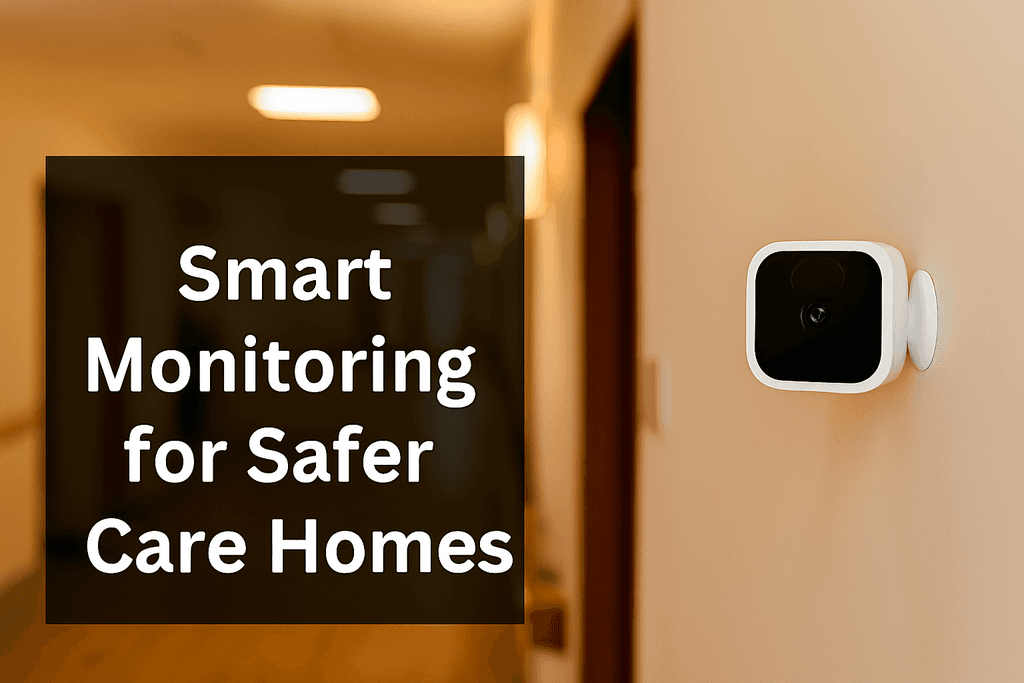Smart Surveillance for Clinics & Care Homes in Canada | Blink Camera Guide
Smart Surveillance for Canadian Clinics and Care Homes Using Blink
Explore how Blink smart cameras provide wireless, privacy-conscious surveillance for Canadian clinics and care homes. Improve safety, monitor visitors, and support staff with easy-to-install solutions.
Discover how Blink smart cameras enhance safety, privacy, and efficiency in Canadian clinics and long-term care homes. Learn practical installation tips, privacy features, and real-world use cases.
Smart Surveillance for Canadian Clinics and Care Homes Using Blink
🏥 Why Smart Surveillance Matters in Canadian Healthcare Settings
Canadian clinics and long-term care homes face increasing pressure to balance safety, privacy, and staffing challenges. With aging populations, rising healthcare demands, and limited personnel, smart surveillance offers a scalable solution to monitor environments without compromising dignity or autonomy.🔍 Challenges in Clinics and Care Homes
- Staffing shortages: Many facilities struggle to maintain 24/7 supervision, especially in rural or understaffed regions.
- Privacy concerns: Traditional surveillance can feel invasive, especially in personal care areas.
- Compliance and safety: Canadian regulations require secure environments without violating patient rights.
🎯 Why Blink Is a Game-Changer
Blink’s smart surveillance system offers:- Wireless installation: No drilling or complex wiring—ideal for retrofitting older buildings.
- Motion detection alerts: Staff are notified instantly when movement is detected in sensitive zones.
- Two-way audio: Enables remote communication with patients or visitors.
- Cloud and local storage options: Facilities can choose secure data handling that aligns with privacy policies.
- Customizable zones: Cameras can be configured to monitor hallways, entrances, or common areas—while excluding private spaces like bathrooms.
🧓 Use Cases in Canadian Care Homes
1. Nighttime Monitoring Without DisturbanceBlink cameras can monitor hallways and shared spaces during overnight hours, reducing the need for physical room checks that may disturb residents’ sleep.
2. Fall Detection and Emergency Response
Motion alerts help staff respond quickly to unexpected movement, such as a resident falling or wandering into restricted areas.
3. Visitor Management
Front-door Blink cameras with two-way audio allow staff to verify visitors before granting access—especially useful in memory care units.
4. Remote Family Access
🧠 Privacy-Conscious Design
Unlike traditional CCTV systems, Blink cameras are designed with privacy in mind:- No continuous recording unless motion is detected.
- Encrypted data transmission protects sensitive footage.
- User-controlled settings allow facilities to disable audio or video features in private zones.
🌐 Integration with Smart Home Ecosystems
Blink integrates seamlessly with Alexa-enabled devices, allowing voice control and automation. For example:- “Alexa, show me the clinic entrance” displays live footage on a smart screen.
- Scheduled arming/disarming ensures cameras are active only during designated hours.
🛠️ Installation Tips for Clinics and Care Homes
- Start with key zones: Entrances, hallways, and medication storage areas.
- Use Blink Mini for indoor spaces: Compact and discreet, ideal for reception desks or nursing stations.
- Consider Blink Outdoor for perimeter security: Weather-resistant and battery-powered.
- Enable privacy zones: Mask out areas like beds or bathrooms to comply with privacy standards.
🗣️ “Peace of Mind Without Compromising Privacy” – Natalie, Clinic Administrator in Ontario
Quote text hereWe installed Blink cameras in our small clinic to monitor entrances and medication storage. I was worried about privacy at first, but the motion alerts and customizable zones helped us set clear boundaries. Staff feel safer during night shifts, and setup was surprisingly easy. It’s not about watching people—it’s about being ready when something happens.
🧩 Final Thoughts
Smart surveillance isn’t just about security—it’s about trust, dignity, and proactive care. Blink offers Canadian clinics and care homes a flexible, privacy-conscious way to enhance safety while respecting the people they serve.Frequently Asked Questions
1. Are Blink cameras compliant with Canadian privacy laws in clinics and care homes?
Yes. Blink cameras offer customizable privacy zones, encrypted data, and motion-based recording—making them suitable for use in healthcare settings when installed responsibly.
2. Can Blink cameras be used without Wi-Fi in rural care homes?
Blink cameras require Wi-Fi for live view and cloud storage. However, with a stable local network and optional Blink Sync Module 2, you can enable local storage via USB.
3. How long do Blink camera batteries last in care home environments?
Battery life can last up to two years under standard use, but high-traffic areas may reduce this. Blink Outdoor and Indoor models use AA lithium batteries for easy replacement.
4. Can families access Blink camera feeds in care homes?
Yes, with proper permissions and account sharing, families can view live feeds or receive motion alerts—enhancing transparency and peace of mind.
Product Comparison
| Feature | Product 1 | Product 2 | Product 3 |
|---|---|---|---|
| Feature | Blink Mini | Blink Indoor (3rd Gen) | Blink Outdoor (4th Gen) |
| Power Source | USB plug-in | 2× AA lithium batteries | 2× AA lithium batteries |
| Weather Resistance | ❌ Indoor only | ❌ Indoor only | ✅ Weather-resistant |
| Two-Way Audio | ✅ Yes | ✅ Yes | ✅ Yes |
| Motion Detection | ✅ Yes | ✅ Yes | ✅ Yes |
| Local Storage Option | ✅ With Sync Module 2 | ✅ With Sync Module 2 | ✅ With Sync Module 2 |
| Night Vision | ✅ Standard IR | ✅ Standard IR | ✅ Enhanced IR |
| Ideal Use Case | Reception desks, nurse stations | Resident rooms, hallways | Entrances, parking, perimeter |
